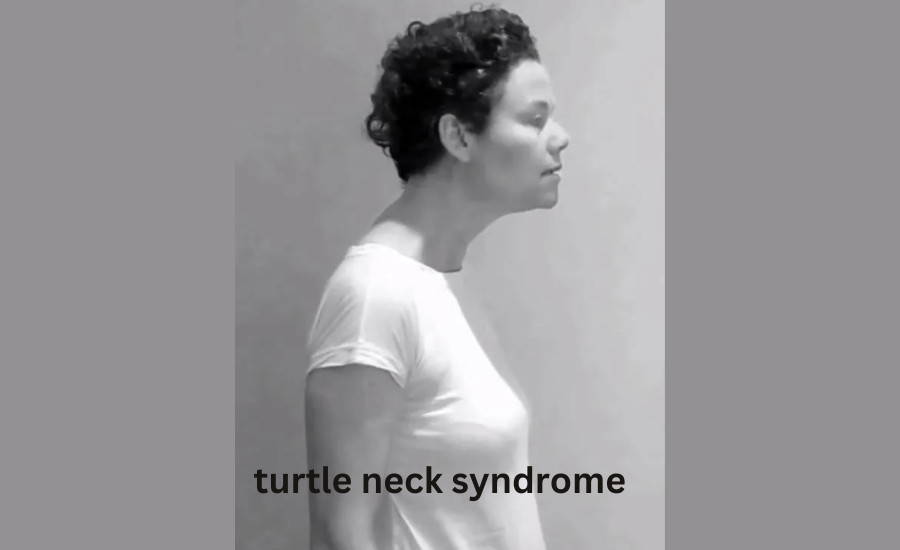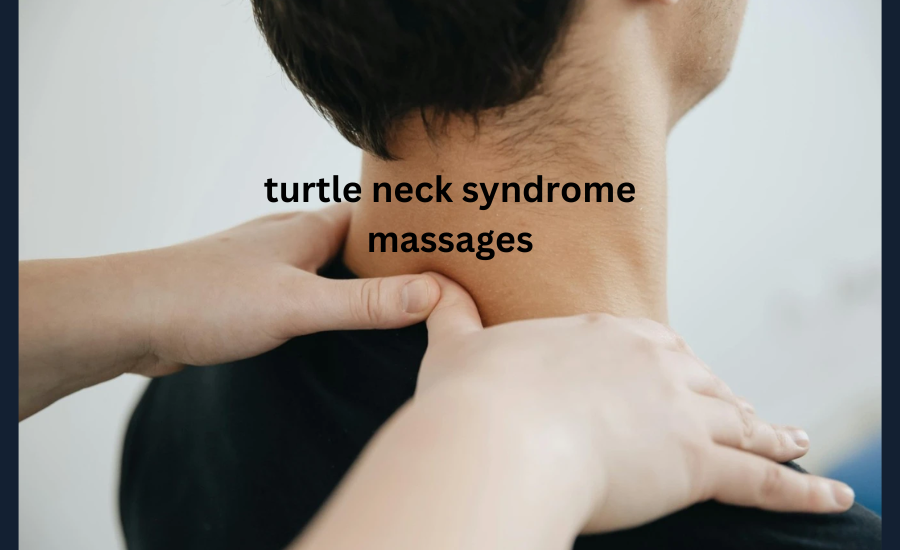Have you ever felt a nagging tension in your neck or discomfort after prolonged use of your smartphone? If that sounds familiar, you may be experiencing what is often referred to as turtle neck syndrome. This contemporary condition is more than just a minor nuisance; if neglected, it can lead to significant health issues. As our daily activities become increasingly centered around screens, comprehending the implications of turtle neck syndrome has become essential. In this discussion, we will explore the nature of this condition, its potential effects on your well-being, and effective strategies to take control of your health and alleviate discomfort.
What is Turtle Neck Syndrome?

Turtle Neck Syndrome refers to a postural issue where the head and neck are positioned too far forward in relation to the spine. This condition typically emerges gradually, particularly among those who spend a considerable amount of time bent over digital devices, such as laptops, tablets, and smartphones.
When this misalignment occurs, it creates a posture that can be likened to a turtle peeking out from its shell. Those who experience turtle neck syndrome often find that their necks protrude forward, which can lead to tension in the muscles of the neck, shoulders, and upper back.
The consequences of turtle neck syndrome extend beyond mere appearance; it can lead to significant discomfort and pain. Many individuals report experiencing chronic tension headaches, muscle tightness in the shoulders, and reduced mobility in their neck. It is crucial to recognize and understand this condition to effectively address its impact on daily life and enhance one’s overall quality of life. By taking proactive measures to improve posture and alleviate discomfort, individuals can significantly improve their well-being and prevent the condition from worsening.
Recognizing the Signs of Turtle Neck Syndrome
Turtle Neck Syndrome can exhibit a diverse array of symptoms, many of which can interfere with daily life. Individuals suffering from this condition often report persistent neck pain, frequently accompanied by a sensation of stiffness. This discomfort is not isolated; it can radiate into the shoulders and upper back, leading to a broader range of discomfort.
One of the hallmark signs of turtle neck syndrome is noticeable poor posture, where the head leans forward, and the shoulders hunch, creating an awkward alignment. This misalignment may result in increased fatigue and strain during routine tasks, making activities that were once effortless feel challenging.
Tension headaches are another common symptom associated with turtle neck syndrome, often resulting from the ongoing strain placed on the neck muscles. If the condition is left untreated, these headaches can become a regular issue, further complicating daily functioning.
Additionally, individuals may experience numbness or tingling in their arms, a result of nerve compression due to tightened muscles in the neck and upper back.
Another significant symptom is a decreased range of motion, which can make turning or tilting the head uncomfortable or even painful. Recognizing these signs early is essential for implementing targeted management strategies that can alleviate symptoms and enhance quality of life. By addressing turtle neck syndrome proactively, individuals can improve their overall comfort and prevent the condition from progressing.
Primary Factors Contributing to Turtle Neck Syndrome

Turtle Neck Syndrome frequently arises from poor posture, especially in today’s digital environment. With the widespread use of smartphones and computers, many people find themselves leaning over their devices for extended periods, leading to this condition.
Muscle imbalances are also a critical factor. Weakness in the upper back and neck muscles can result in an exaggerated forward head position, which puts undue stress on surrounding areas.
Stress can further exacerbate the issue. When experiencing anxiety or tension, it’s common for individuals to unconsciously tilt their heads forward, a habit that can lead to discomfort over time.
Moreover, prolonged sitting without proper ergonomic support can worsen turtle neck syndrome. Whether working at a desk or relaxing on the couch, maintaining a neutral spine is essential for prevention.
Finally, a lack of physical activity can weaken the core muscles that support overall body alignment. A sedentary lifestyle increases the risk of developing turtle neck syndrome, making it vital to incorporate movement into daily routines.
Strategies for Preventing and Treating Turtle Neck Syndrome

Preventing turtle neck syndrome begins with cultivating awareness about posture. It’s essential to maintain proper alignment while sitting or standing, especially when engaging with screens. Utilizing ergonomic furniture can greatly enhance comfort and support.
Incorporating regular breaks into your routine is vital for managing tension. Aim to stand up, stretch, and move around every hour to alleviate stress in the neck and shoulder regions.
For treatment, physical therapy is an effective option that focuses on strengthening underused muscles and enhancing flexibility. A qualified therapist can design personalized exercise regimens that address specific areas of discomfort.
Applying heat or cold packs can also provide relief from pain. Heat helps to relax tight muscles, while ice can effectively reduce inflammation after prolonged periods of desk work.
Additionally, massage therapy can be beneficial in relieving symptoms by releasing muscle tension and improving circulation in the affected areas. It’s advisable to seek out experienced professionals who are knowledgeable about the specifics of turtle neck syndrome to achieve the best outcomes.
Exercise and Stretching Strategies for Easing Symptoms
Integrating targeted exercises and stretches into your daily routine can greatly reduce the discomfort linked to turtle neck syndrome. Prioritize movements that not only strengthen the neck and back muscles but also enhance flexibility.
One effective exercise is the chin tuck. To perform this, gently pull your chin toward your chest and hold the position for several seconds before releasing. This straightforward movement aids in aligning the spine and alleviating strain on the neck.
Shoulder rolls can also provide significant relief. Slowly roll your shoulders forward and backward in a controlled manner to help release tension in the neck area.
Upper trapezius stretches should not be overlooked. To do this, tilt your head sideways toward one shoulder while keeping the opposite shoulder down. You should feel a gentle stretch along the side of your neck, which can be quite effective in relieving discomfort.
Incorporating yoga poses such as Child’s Pose or Cat-Cow can further improve flexibility in the spine and neck. These gentle movements promote balance and gradually reduce tightness over time, contributing to overall comfort and well-being.
Modifications to Your Lifestyle for Managing Turtle Neck Syndrome
Implementing straightforward lifestyle adjustments can greatly assist in managing turtle neck syndrome. Begin by maintaining awareness of your posture throughout the day. For instance, repositioning your workstation so that your computer screen aligns with eye level can significantly enhance your comfort.
It’s also essential to incorporate regular breaks into your daily schedule. Aim to stand up, stretch, and move around every hour to relieve the tension that accumulates in your neck and shoulders.
Additionally, consider minimizing screen time whenever possible. Engage in activities that do not require you to look down at devices for prolonged periods, allowing your neck to rest.
Selecting a supportive pillow for sleep can also be advantageous. Opt for a pillow that ensures your neck remains aligned with your spine, promoting better posture during rest.
Lastly, staying adequately hydrated supports muscle function and aids in recovery. Keeping water readily available encourages you to drink throughout the day. By making these simple adjustments, you can experience significant improvements in your overall comfort and well-being over time.
The Role of Massage Therapy in Alleviating Turtle Neck Syndrome
Massage therapy can be a highly effective approach for managing the discomfort associated with turtle neck syndrome. This condition often arises from prolonged poor posture, leading to muscle tension and discomfort in the neck, shoulders, and upper back. By addressing these issues through targeted massage techniques, individuals can experience significant relief and improved mobility.
Benefits of Massage for Turtle Neck Syndrome

Relief of Muscle Tension
Regular massage can help alleviate tightness in the muscles surrounding the neck and upper back. By applying pressure to these areas, a skilled massage therapist can release built-up tension, promoting relaxation and comfort.
Improved Blood Circulation
Massage therapy enhances blood flow to the affected muscles, which can facilitate healing and recovery. Improved circulation helps to deliver essential nutrients and oxygen to the tissues, promoting overall muscle health.
Enhanced Range of Motion
By addressing muscle tightness and promoting relaxation, massage can increase flexibility and range of motion in the neck. This improvement allows for easier movement and can reduce discomfort during daily activities.
Stress Reduction
Since stress is a contributing factor to turtle neck syndrome, massage therapy also serves as a powerful tool for relaxation. The soothing nature of massage can lower stress levels, which may help alleviate tension in the neck and shoulders.
Techniques for Massage Therapy
Swedish Massage
This technique involves long, gentle strokes and kneading movements that promote relaxation and improve circulation. It’s particularly effective for relieving overall tension in the body.
Trigger Point Therapy
This technique focuses on specific tight knots or trigger points within the muscles. By applying sustained pressure to these areas, the therapist can help release tension and reduce pain.
Deep Tissue Massage
This approach targets deeper layers of muscle and connective tissue, providing a more intense treatment. It’s beneficial for addressing chronic muscle tension and pain often associated with turtle neck syndrome.
Cervical Massage
This specialized technique focuses on the muscles of the neck, applying gentle pressure and stretching to alleviate tightness and improve mobility.
Finding the Right Massage Therapist

When seeking massage therapy for turtle neck syndrome, it’s essential to choose a qualified therapist who understands the nuances of this condition. Look for professionals with experience in treating neck and shoulder issues and who can tailor their approach to your specific needs. Communication is key; be sure to discuss your symptoms and any areas of discomfort to ensure you receive the most effective treatment.
The massage therapy offers a holistic approach to managing turtle neck syndrome, providing relief from muscle tension, improving circulation, and enhancing overall well-being. By incorporating regular massage sessions into your self-care routine, you can take proactive steps toward alleviating discomfort and improving your quality of life.
FAQs about Turtle Neck Syndrome
Q: What is turtle neck syndrome?
A: Turtle neck syndrome is a postural condition characterized by an excessive forward position of the head and neck in relation to the spine. It commonly develops from prolonged use of digital devices and can lead to discomfort, muscle tension, and various health issues.
Q: What are the signs and symptoms?
A: Common symptoms include persistent neck pain, stiffness, tension headaches, reduced range of motion, and discomfort that may radiate into the shoulders and upper back. Individuals may also experience numbness or tingling in their arms due to nerve compression.
Q: What causes turtle neck syndrome?
A: Primary causes include poor posture, muscle imbalances, stress, prolonged sitting without ergonomic support, and a lack of physical activity. These factors contribute to the misalignment of the spine and the forward positioning of the head.
Q: How can I prevent turtle neck syndrome?
A: Preventive measures include maintaining proper posture, using ergonomic furniture, taking regular breaks to stretch and move, and engaging in physical activities to strengthen the muscles supporting your neck and back.
Q: What treatment options are available?
A: Treatment options encompass physical therapy, heat or cold applications, massage therapy, and targeted exercises designed to strengthen muscles and improve flexibility. Seeking professional guidance can help tailor an effective treatment plan.
Q: Can massage therapy help with turtle neck syndrome?
A: Yes, massage therapy can be highly beneficial for relieving muscle tension, improving circulation, and enhancing range of motion in the neck and shoulders. Techniques such as Swedish, trigger point, and deep tissue massage can effectively address the symptoms associated with this condition.
Q: How can I modify my lifestyle to manage turtle neck syndrome?
A: Lifestyle changes include being mindful of posture, reducing screen time, using a supportive pillow, and staying hydrated. Regular physical activity and incorporating stretches can also improve overall comfort.
Conclusion
Turtle neck syndrome is a common condition arising from modern lifestyle habits, especially the frequent use of digital devices, leading to a forward head posture that results in discomfort and various symptoms affecting daily life. Early recognition of its signs and understanding contributing factors like poor posture, muscle imbalances, and stress are essential for effective management. Preventive measures such as maintaining awareness of posture, using ergonomic furniture, and taking regular breaks can help, while treatment options like physical therapy, heat or cold therapy, and massage offer relief and enhance quality of life. Integrating massage therapy into a self-care routine further supports the holistic management of turtle neck syndrome by reducing muscle tension, improving circulation, and fostering relaxation for better overall well-being.
Read Next: PhmHaven



